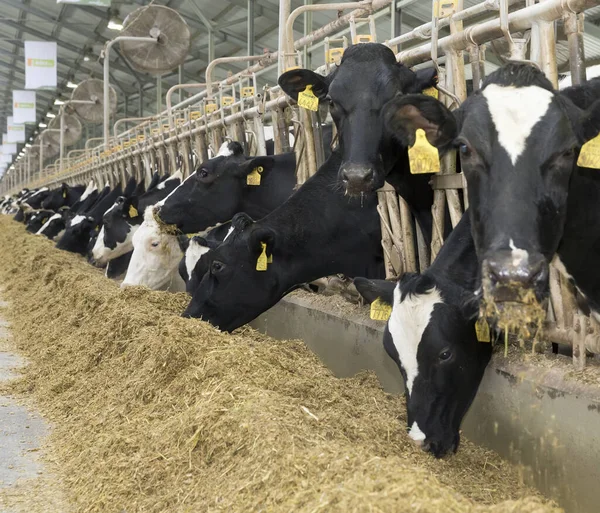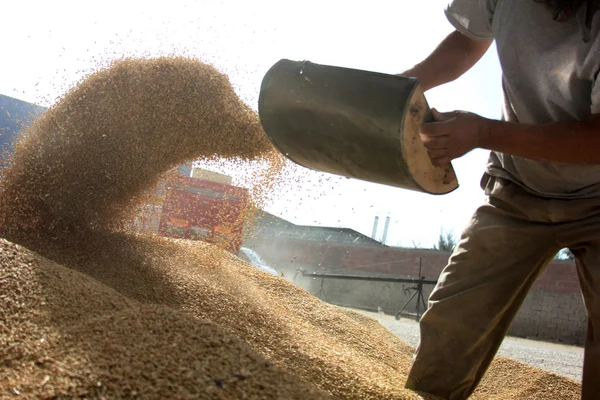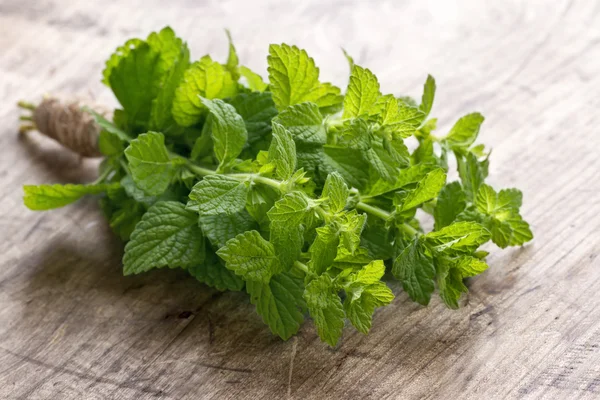Are rising feed costs cutting into your dairy farm’s profits? You’re not alone. Feed accounts for up to 70% of dairy farming expenses, but here’s the good news: you can significantly reduce these costs by formulating your own homemade dairy feed at home. Homemade feed not only slashes expenses but also gives you control over the quality and nutrition, ensuring your cows get exactly what they need to thrive.
In this guide, we’ll walk you through the essentials of creating high-quality, cost-effective dairy feed using locally available ingredients—because feeding smarter means farming better.
What is Homemade Dairy Feed Rations
Homemade dairy feed ration is a specially formulated mixture of ingredients used to provide balanced nutrition to dairy cows. You can make it using the available ingredients at home such as grains, protein sources, minerals, and vitamins. Given the many benefits of home animal feed, it has become a common practice among many successful dairy farmers in Kenya. Those benefits include controlling the quality, costs and nutrients of your cows for optimal milk production and overall health.
Related: How to Make Homemade Chicken Feed- Best Recipes
Are there benefits of using Homemade Animal feeds?
- Cheap: Making own animal feed is cheaper compared to pre-formulated commercial feeds.
- Quality: You can carefully select high-quality ingredients, ensuring your feed is free from harmful additives or contaminants.
- Sustainability: You can use local resources and ingredients, helping your local economy grow and is benefit the environment.
- Self-sufficiency: Making your own feed gives you reliable control over the production process and reduces the disruptions in feed availability.
- Nutritional & Animal health control: Homemade feeds gives your cattle a well-balanced diet, optimal milk production, reproduction, and overall herd health.
Challenges of Homemade Animal feeds

Are there any disadvantages to making homemade dairy feed rations? Some veterinarians are opposed to dairy farmers making animal feed at home. Among the main demerits cited are expertise, quality and cost issues as follows.
- Lack of expertise: Lack of knowledge in feed formulation can lead to imbalanced diets affecting your cow’s health and milk production.
- Time-consuming: Sourcing ingredients, calculating ratios, and proper mixing can add complexity to the daily routine of a dairy farmer.
- Feed Quality: Homemade feed nutrition quality may vary due to fluctuations in ingredient quality and availability.
- Risk of contamination: Improper handling, storage, or contamination of ingredients can pose a risk of feed spoilage or contamination.
Which are the common dairy feed supplements in Kenya
Any type of milking cows’ feed other than forage is known as supplements. They are classified by their ability to supply your dairy cows with energy, protein, fiber, vitamins, or minerals. In the following sections, you will learn a list of the common energy supplements, protein supplements, and common agro-industrial by-products used by Kenyan milk farmers.
Energy Supplements in Kenya
These types of animal feed have large quantities of starches and sugars. Examples are cereal grains like maize, sorghum, and rice. Others are root crops like cassava and sweet potato. Some commercial farmers buy high energy products from factories like rice bran, cassava waste, and brewer’s grains.
The table below has the dry matter (DM) and crude protein (CP) and the total digestible nutrients (TDN) values of the common energy-rich supplements available in Kenya.
| Energy Supplement | DM (%) | CP (%) | TDN (%) |
|---|---|---|---|
| Cassava Chips | 88 | 2.1 | 80 |
| Maize Grains | 85 | 11.0 | 83 |
| Sorghum grain | 90 | 12.0 | 89 |
| Paddy Rice | 89 | 8.9 | 79 |
| Brown Rice | 88 | 10.3 | 92 |
| Mollasses | 79 | 2.8 | 86 |
| Sweet Potatoes | 32 | 5.0 | 80 |
| Dry Pineaple Waste | 85 | 4.6 | 70 |
| Dry Cassava waste | 88 | 1.9 | 78 |
| Sweet Corn waste | 18 | 12.6 | 70 |
| wheat pollard | 89 | 15.0 | 78 |
| Brewers Grain | 26 | 28.8 | 65 |
| Rice Bran | 91 | 14.1 | 70 |
Best Protein Supplements in Kenya
Dairy farmers can also feed their dairy cattle with high-protein feeds. The highest quality protein supplements originate from animals such as fishmeal, omena, and shrimps. Dairy farmers in Kenya also use Urea as a common source of protein supplements. However, for it to be effective, you need to combine it with cereal grains or maize. The other cheap sources of protein supplements are grains or by-products of leguminous plants such as peanuts, soybeans, sunflowers, mung beans, and cottonseed.
The table below is a summary of common protein-rich supplements in Kenya. Each has its DM, CP, and TDN values for comparison.
| Protein Feed | Dm (%) | CP (%) | TDN (%) |
|---|---|---|---|
| Soybean Meal | 91 | 48.7 | 86 |
| Coconut Meal | 92 | 19.2 | 75 |
| Peanut Meal | 93 | 50.6 | 84 |
| Mung beans | 91 | 28.3 | 86 |
| sunflower meal | 94 | 52.4 | 75 |
| cottonseed meal | 93 | 44.3 | 78 |
| whole cottonseed | 92 | 30.3 | 63 |
| palm kernel cake | 91 | 15.1 | 76 |
| Fish meal | 86 | 64.7 | 73 |
| Blood meal | 94 | 89.7 | 66 |
| Shrimp waste | 90 | 52.0 | 48 |
| soybean curd | 15 | 22.2 | 82 |
| Urea | 100 | 280 | – |
In addition to the above protein sources, some farmers in Kenya are considering other sources such as canola, azolla a sea fern weed, and spirulina an algae. other sources are black soldier flies, a type of high-protein insect, and snails.
Agro-industrial by-products
The majority of dairy farmers prefer to buy dry wastes or byproducts from factories. the common ones that you can source cheaply in Kenya are
- Rice by-products; include rice pollard and rice bran
- Maize/corn byproducts; maize gluten, maize steep liquor, maize distillers grains, mill mix, hominy, and maze combs
- Wheat pollard
- Oilseed meals; which can include cottonseed, canola, sunflower, and soybean meals
- whole cotton seeds from cotton gins
Which are Common Homemade Dairy feeds in Kenya?
Several homemade rations can be used to feed dairy cows. These include dairy homemade ration, lupin and maize flour, pineapple waste, brewers’ yeast, and poultry waste, maize germ, and wheat bran.
Homemade Dairy Ration
The dairy homemade ration is the most common DIY animal feed in Kenya. It is a mixture of different ingredients that provide the necessary nutrients for dairy cows. The ingredients include wheat bran, cotton seed cake, maize germ, maize grain flour, soybean meal/cake, sunflower, limestone, and salt (Magadi). The proportions of each ingredient to make a 50 kg ration are as follows:
- 6 kg wheat bran
- 6 kg cotton seed cake
- 17.5 kg maize germ
- 12.5 kg maize grain flour
- 2.5 kg soybean meal/cake
- 5 kg sunflower
- 0.25 kg limestone
- 0.33 kg salt (magadi)+C
Wheat bran is high in fiber and acts as a source of energy. The Cotton seed cake is rich in protein while the maize germ and maize grain flour provide carbohydrates and additional energy. Soybean meal/cake is an excellent source of protein, essential amino acids, and minerals. Sunflower contributes to the overall fat content. Finally, the Limestone supplies calcium for strong bones and, salt (Magadi) provides necessary minerals.
Lupin and Maize Flour
Lupin and maize flour is another cheap homemade dairy feed ration that can be used to feed dairy cows. The proportions of each ingredient are 1 kg lupin to 3 kg maize flour.
Lupin is a legume that is rich in protein, making it an excellent source of essential amino acids for dairy cows. It also contains carbohydrates and fiber.
When you combine lupin and maize flour in the above ratios, Your dairy feed will have a balanced mix of protein, carbohydrates, and fiber for your milking cows. Apart from meeting their nutritional needs, it will improve their overall health and milk production.
Pineapple Waste
Do you have huge access to Napier grass? One way to improve your milk yields is to mix it with dry pineapple waste to make homemade dairy feed for your milking cows. The proportion of each ingredient is 15 kg Napier grass for 5 kg pineapple waste.
- 15 kg Napier grass
- 5 kg pineapple waste
Napier grass, or Elephant grass, is a common forage crop that provides a good source of fiber for cows. It is rich in structural carbohydrates and has moderate protein content
Pineapple juice and by-products without the crown have a higher energy value than maize silage. The nutritional value of pineapple waste is high, with a dry matter content of 88.6%, and crude protein content of 4.5%. In terms of gross energy, pineapple waste has a Gross Energy (GE) value of 17.0 MJ/Kg DM and a Metabolizable Energy (ME) value of 10.8 MJ/Kg DM. Pineapple waste is also very tasty for cows and can be mixed with other feed sources
Brewers’ Yeast
Brewers’ yeast is a byproduct of the brewing industry that you can use to make homemade ratios for dairy cows. The ingredients include 5 liters of water, 3 kg of brewers’ waste, and 3 kg of homemade ration.
- 5 liters H₂O
- 3 kg brewers’ waste
- 3 kg homemade ration
Brewers’ yeast is a source of protein that can be used to increase milk yields. Brewers’ yeast contains 50% dry matter (DM), which means that it is a concentrated source of nutrients. The CP, or crude protein, content of Brewers’ yeast is between 40-50%, which is a measure of the amount of protein in the feed.
Poultry Waste, Maize Germ, and Wheat Bran:
Are you a dairy farmer who also rears chicken? You can use poultry waste to make high-protein dairy feed at home. You will need to mix it with, maize germ, and wheat bran. The proportions needed to make 1000kg of dairy ration of each ingredient are
- 16 x 10 kg of poultry waste
- 19 x 50 kg bags of maize germ
- 14 x 50 kg bags of wheat bran
Generally, the total digestible nutrient (TDN) value of poultry litter is approximately 50%, and the crude protein content averages between 21% to 28%. However, it is recommended to analyze the specific nutritional composition of the poultry litter being considered for use in dairy rations.
There is a possibility that pharmaceutical residues used in poultry production can contaminate the quality and safety of the milk produced. As such, only small amounts (up to 10% of complete rations for lactating dairy cows) of dried poultry waste can be included in dairy rations.



